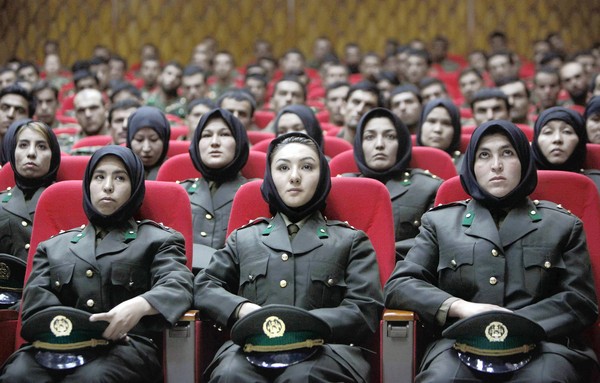Source: Afghanistan Institute for Strategic Studies
Introduction
The ANA is commonly viewed as one of post-2001 Afghanistan’s strongest institutions, if not the strongest. However, with the imminent withdrawal of international forces, the ANA’s ability to stand on its own and successfully confront its enemies faces its first major test. This study shows that crucial weaknesses and flaws continue to undermine the ANA’s readiness; these could derail its efforts to contain or defeat the ongoing insurgency.
The ANA continued to experience high attrition rates in 2013, as has been the case throughout its history, largely due to a high rate of desertions. The desertion rate is attributable to a variety of factors, including the low quality of recruits, but the disinclination to serve in the ANA is inevitably linked to a larger state legitimacy problem. The ANA has been unable to attract recruits from sectors of the population which benefited most from international intervention after 2001 (the urban and peri- urban population), relying instead largely on recruits from the poorest rural areas, who benefited the least from economic and social development post-2001. It is not surprising that motivation among the ANA rank-and-file remains somewhat dubious.
Although the ANA has received considerable levels of investment from donors, particularly in terms of training and mentoring, the effort has made slow progress, in part because of the relatively low quality of human resources attracted to the ANA. The main problem with Western assistance to the ANA has been its tendency to import external models into a country which lacks the structural and educational capacity to implement them. Capacity substitution afflicted the ANA until 2013, when the gradual withdrawal of international mentors forced ANA officers and combat support to develop their own capacity. While there have been encouraging signs that this effort is finally making headway, by the end of 2013, it was far from clear that the ANA had enough time to catch up before being having to confront major challenges.
The extent to which the ANA might require additional components, such as strong artillery or an air force, is still under debate. Afghans generally support the idea that more heavy equipment is a necessity, as is a strong air force. ISAF and NTM-A have argued that heavy equipment is counter-productive in fighting a counter-insurgency. Furthermore, the fact remains that the ANA has been trained to fight with strong air support, which it will no longer have after 2014. The Afghan Air Force is still in an early stage of development and there is no plan to equip it with anything more than a transport fleet and a handful of counter-insurgency aircraft.
Logistics is probably the ANA’a most crucial weakness. Despite a 2013 rush to develop it, the ANA lacks experienced logisticians to handle complex tasks essential for supporting tens of thousands of troops deployed away from their bases. As such skills cannot be improvised, the lack of logistical capability may force the Afghan government to depend increasingly on unreliable irregular forces to fight in areas far from the main cities and the highways.
Although by 2013 the ANA was a much more professional force than it was in 2005, nepotism and political factionalism have continued to undermine it, and external interference in its chain of command has been common. While the extent of ethnic friction might be exaggerated in some press reporting, frequent contact between ANA officers and politicians has exacerbated inefficient allocation of human resources within the organization. Despite some progress in improving discipline (for example, the crackdown on narcotics use), the overall level of discipline in the ANA remains poor.
In conclusion, the ANA faces major challenges in the near future. Some of these are the result of long-term neglect and cannot be quickly rectified. Others, however, are the result of political interference and patronage network building, which could be addressed if there was the political will to do so. As of 2013, the Afghan political elite seemed more concerned with their own petty struggles in Kabul than with whether the ANA was prepared to meet threats on the battlefield.
Although the ANA and the Afghan political leadership have some reason to complain about the under-equipping of the ANA, by 2013 it was clear that there was little that could be done about that in the short term. Assuming that any country was willing to provide additional equipment, as Afghanistan cannot afford to buy any, it would still take a long time before such equipment would enter service because of the training required. Instead, the ANA would do better to make the best use of what it has and manage it as efficiently as it can in 2015, in order to gain sufficient credibility to persuade external donors to keep investing in it.
For the same reason the ANA needs a realistic deployment plan, in order to avoid exposing its greatest weaknesses, including logistics. To speed up the development of components such as logistics and administration, the ANA should devise incentives to attract more high school graduates. The high number of applications to the Military Academy suggests that high school graduates are not averse to serving in the ANA in principle, but need to see what advantages would derive from it. It should also be clear that a serious political crisis at the top (for example, following the 2014 presidential elections) would weaken state legitimacy further and seriously damage morale in the ANA.


